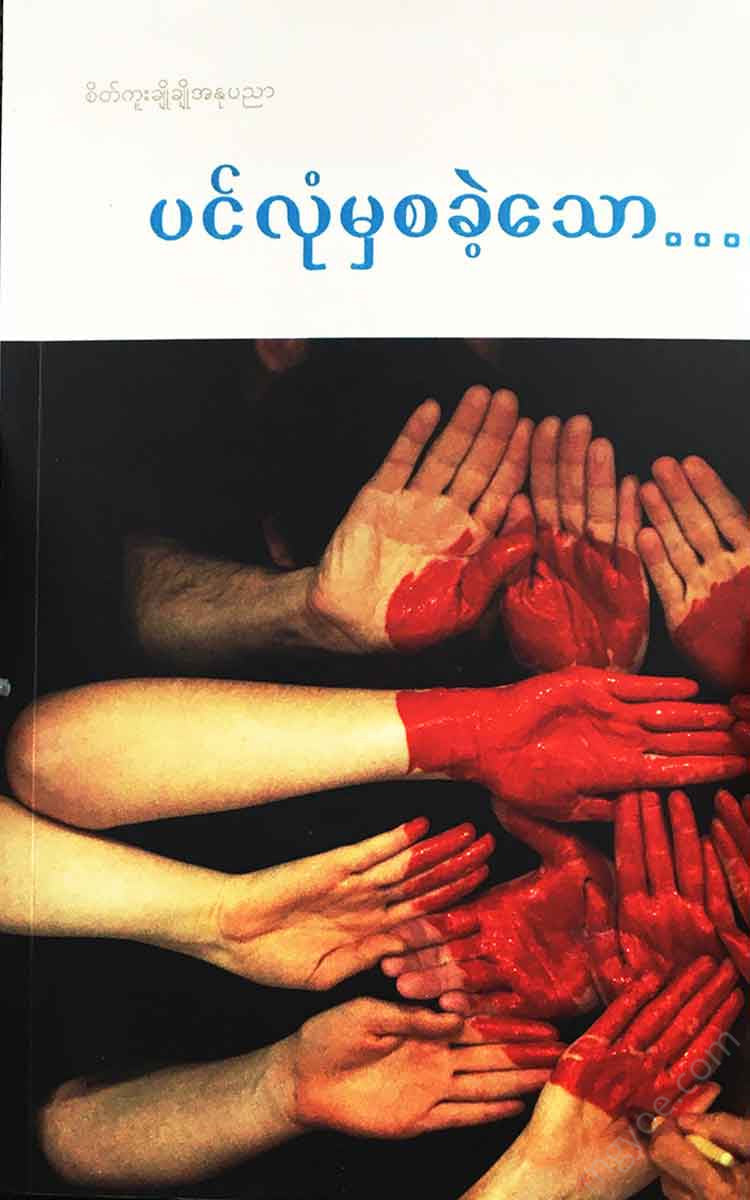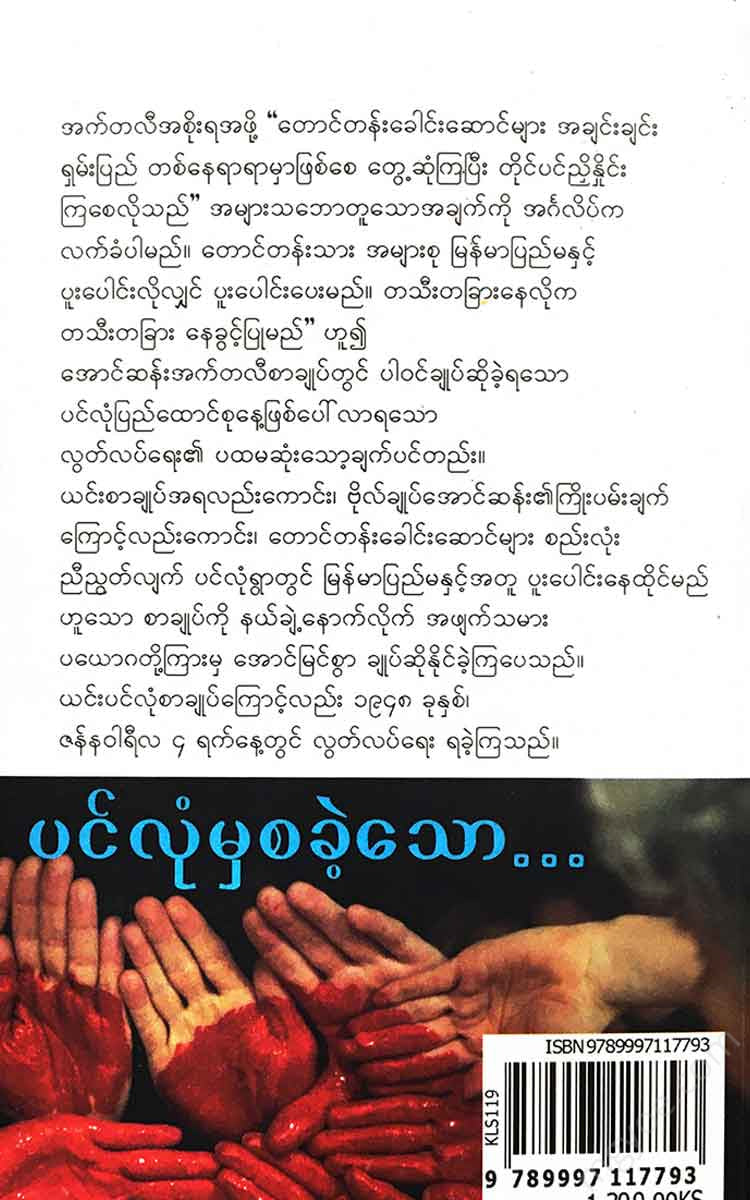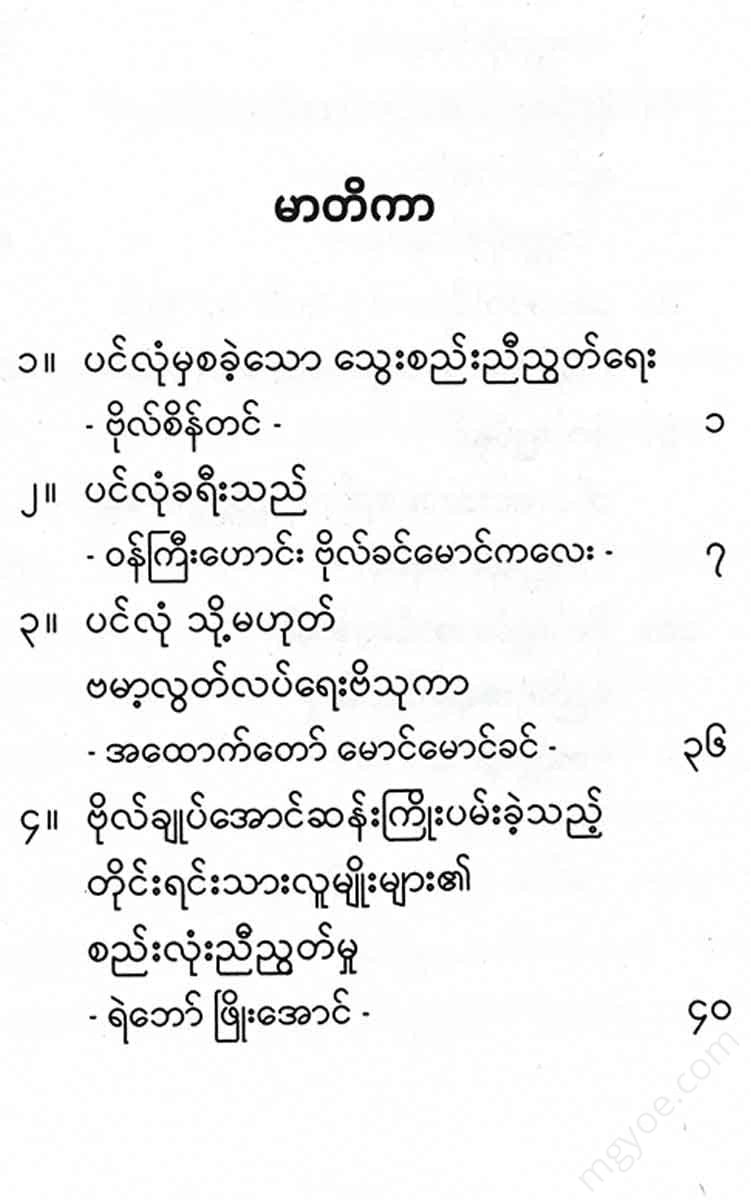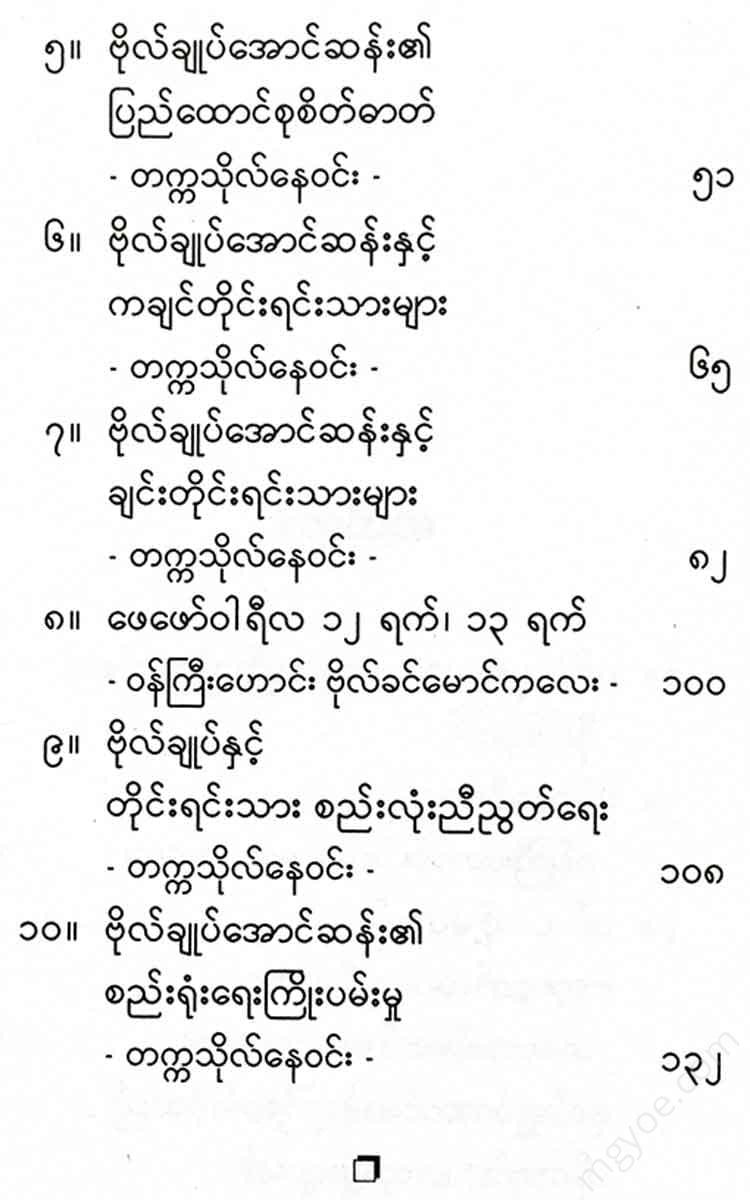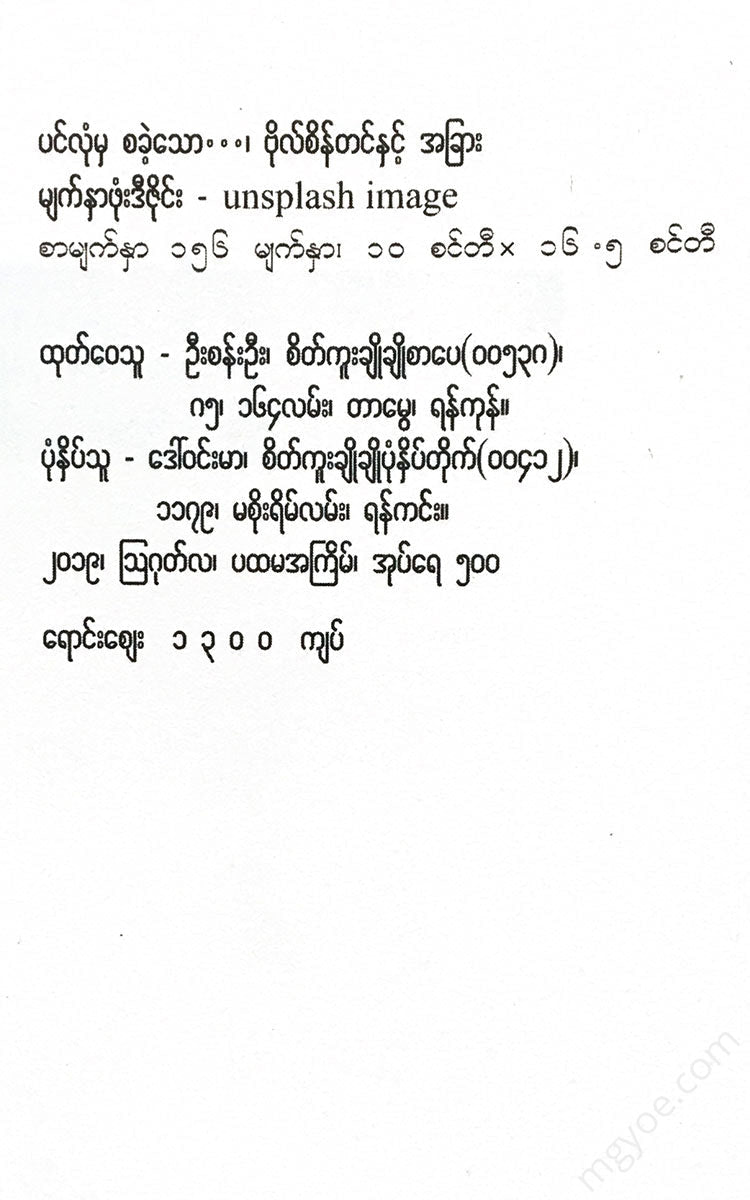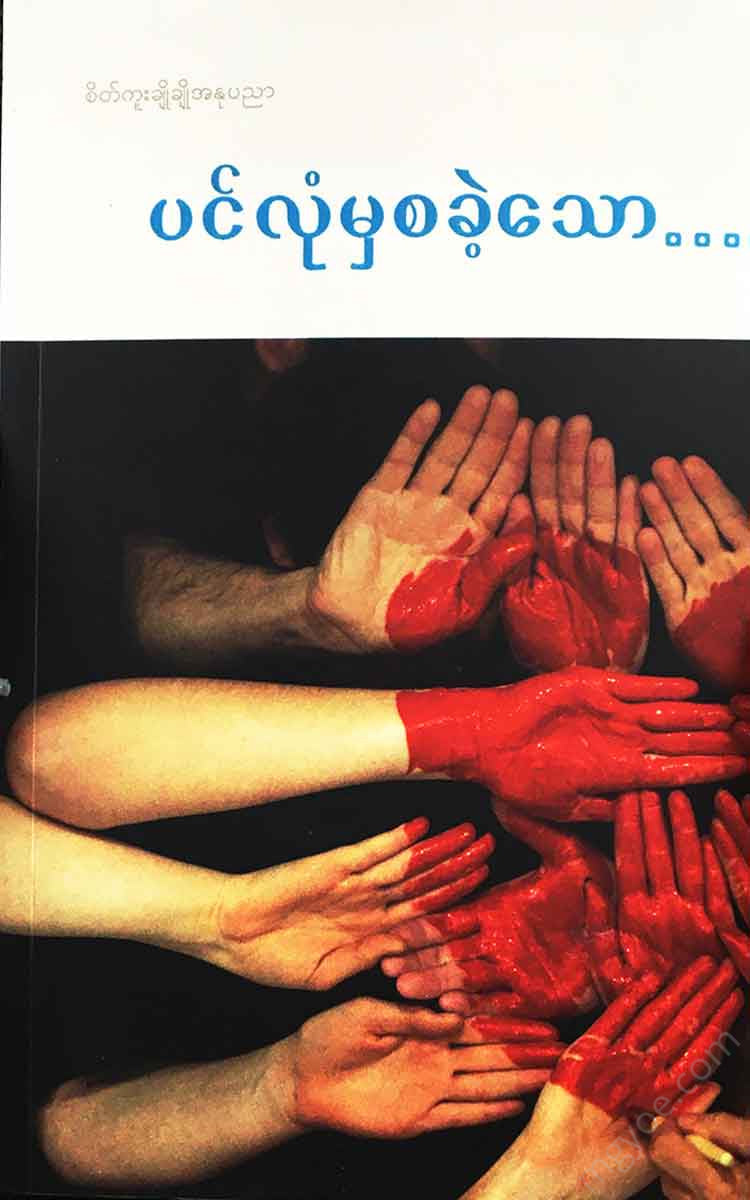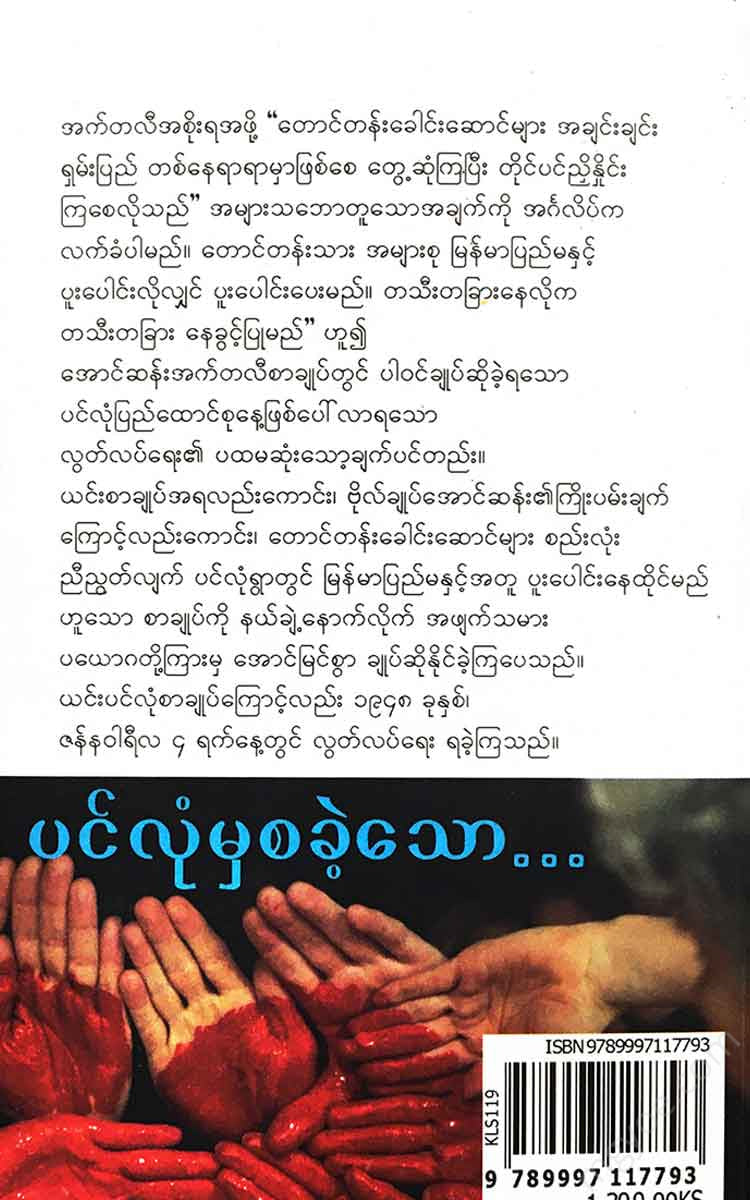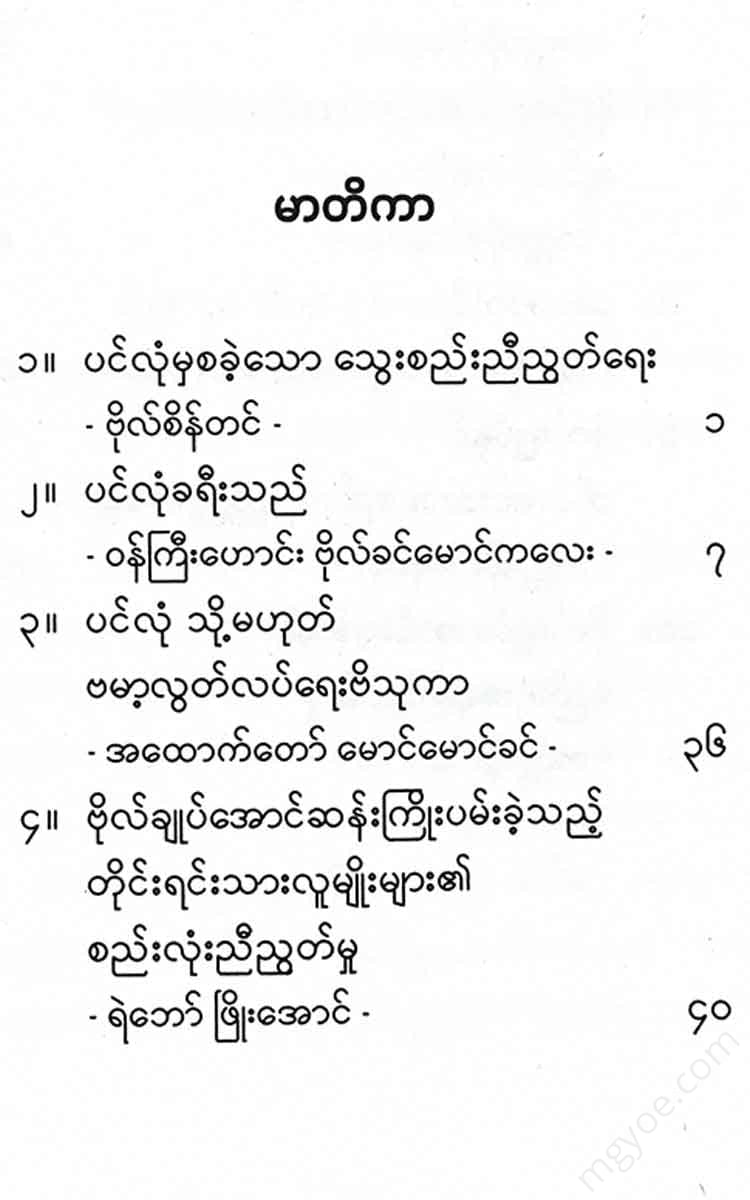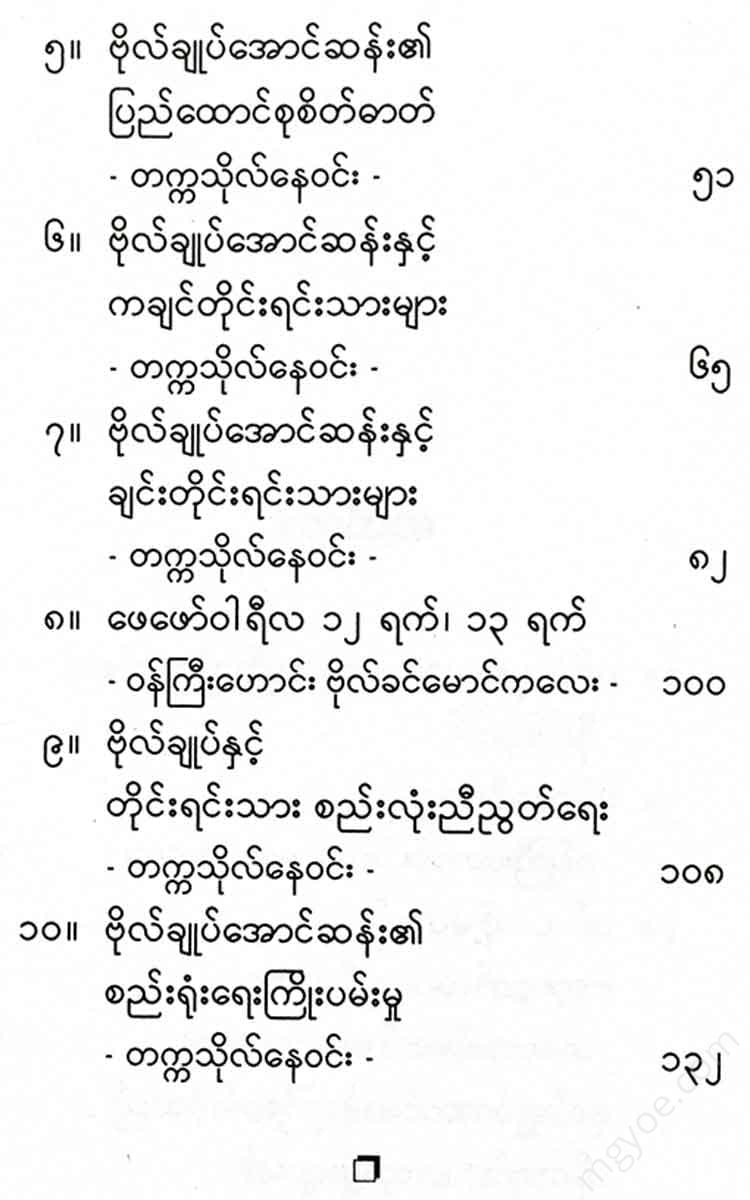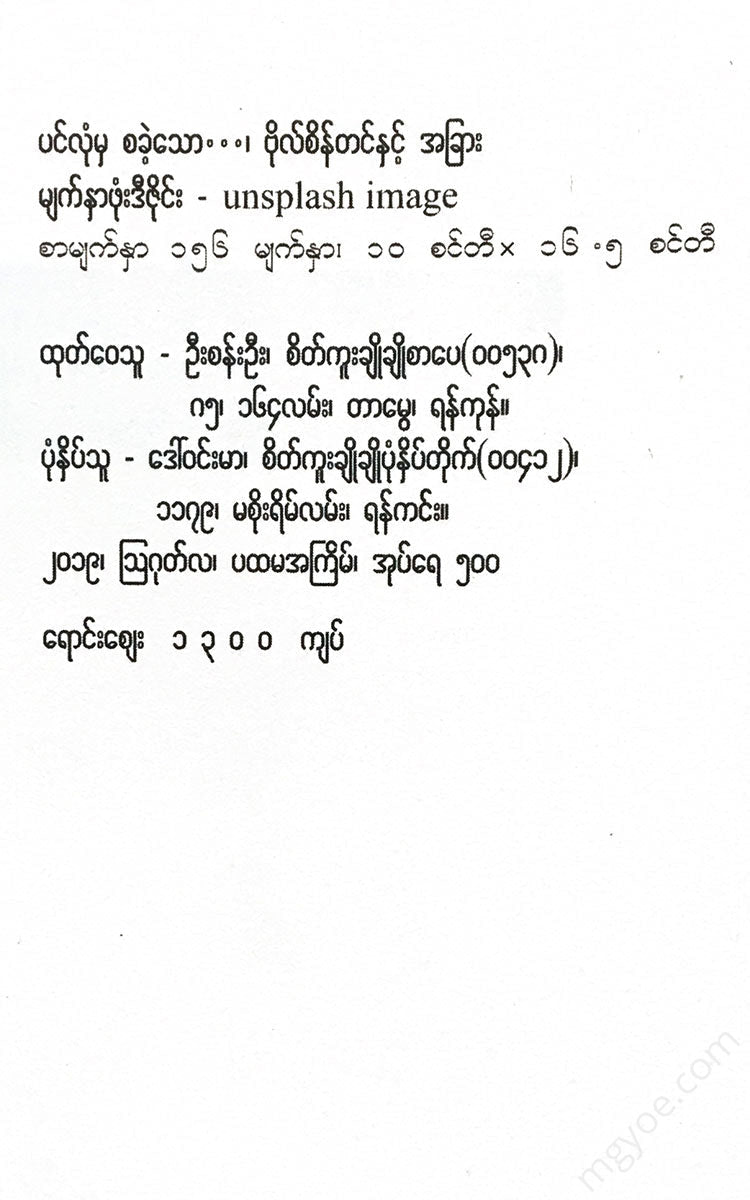စိတ်ကူးချိုချိုစာပေ
Complete set - Starting from Panglong
Complete set - Starting from Panglong
Couldn't load pickup availability
The Panglong Agreement was signed on February 12, 1947, in the village of Panglong, southern Shan State.
Pinglong Village was just an ordinary Shan village, a small village with a modest population. None of the Shan people in this village ever dreamed that our village would become a world-famous village. Similarly, all the ethnic groups in Shan State only knew Pinglong Village as an ordinary village.
However, during his visit to London in January 1947 to campaign for Burmese independence, General Aung San clearly stated that “independence of Burma without mountains is meaningless” and appealed to the British Attlee government to grant independence to the Shan, Kachin, and Chin regions.
Looking back at the past history, the present Union of Myanmar is also an independent Myanmar that included the hill states since the independent Myanmar ruled by the Burmese kings. All these hill states were gradually conquered by the British after the British conquered Burma in 1247 B.C. (1885 AD).
It is important to note that not only Burmese but also all the hill states participated in the first, second and third wars fought by the British in Burma. When General Bandula marched into Assam , 1,000 Thein Pao (aka James Pao), a Kachin national, participated in the fighting, and in the Battle of Wet Htei Kan, over 10,000 Shan nationals participated and fought fiercely against the British colonialists.
This is why General Aung San demanded the independence of all the hill states at the same time.
The British government, however, left the hill region out of the equation when it granted the Burma Dikhi administration in 1919 because it was not yet developed in the hill region, and it was not yet suitable for that kind of administration. The excuse was that the hill region was not yet developed and could not be governed. General Aung San could not accept this excuse, and he only demanded that it should be granted independence together with the Burmese.
While this was being demanded, some of the chieftains who still wanted to continue ruling with feudal influence sent a telegram to the British government. They protested, “General Aung San is not a representative of the Shan people. He has no right to say anything about the Shan mountains. Only the representatives of the mountains have the right to speak about the mountains.” The telegram was shown to General Aung San by the Royal Court official Atlee. The general was very angry and felt very embarrassed.
However, the struggle against imperialism and feudalism was able to mobilize the people of Shan State. The Shan State Independence League in Taunggyi immediately held a public meeting. The meeting supported General Aung San. If independence was granted to Burma, all the hill regions, including Shan State, should be granted independence at the same time, and this demand was sent by telegram to General Aung San in London. The general took the telegram and appealed to Attlee, who said that the Attlee government “would like the hill leaders to meet and consult with each other anywhere in Shan State.” The British would accept the consensus. If the majority of the hill people wanted to join Burma, they would join. "If you want to live separately, you will be allowed to live separately." This was the first key to independence that came about on the Panglong Union Day, which was included in the Aung San-Atlee Agreement. According to this agreement and thanks to the efforts of General Aung San, the hill leaders united and successfully signed an agreement in Panglong village to live together with Burma, between the colonialists and the subversive Payoga.
